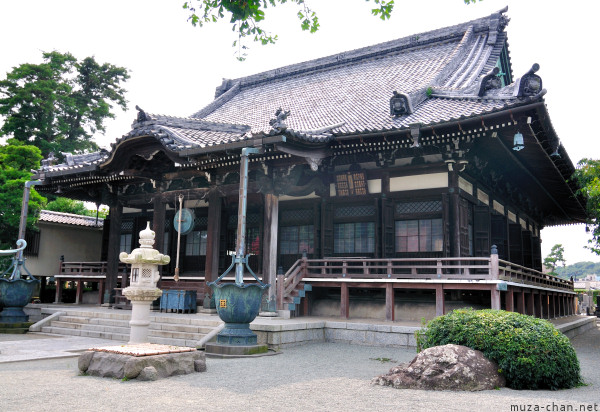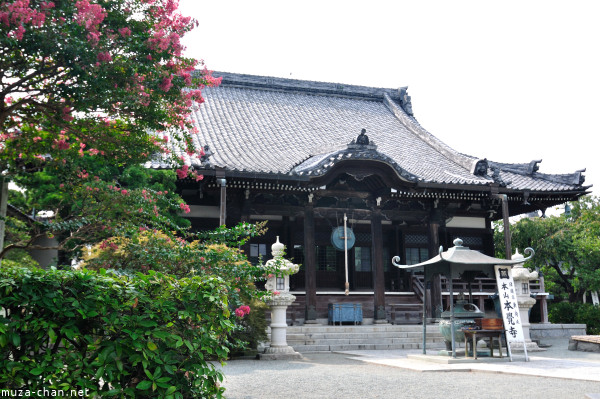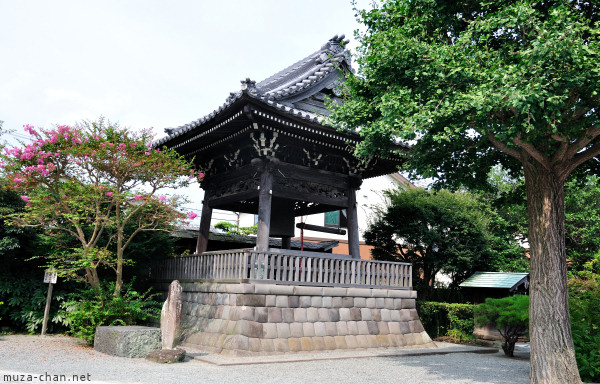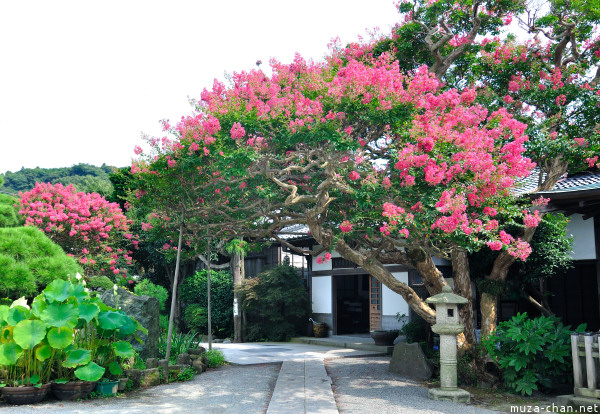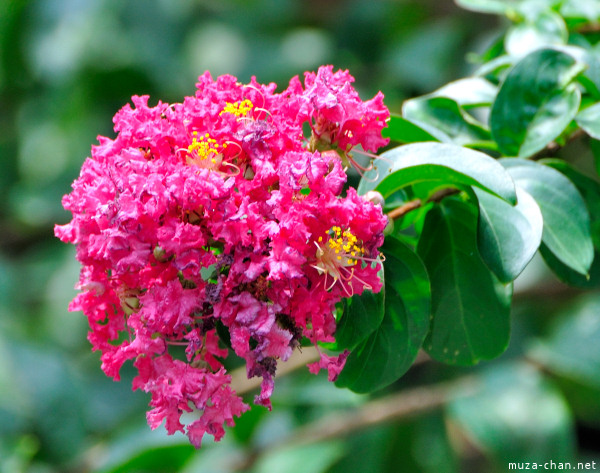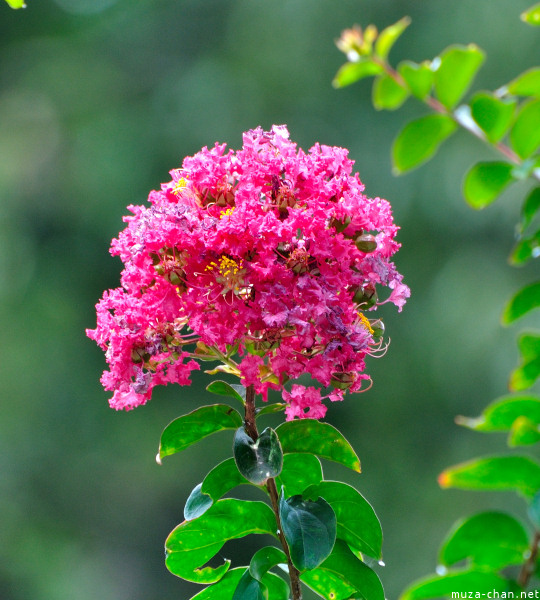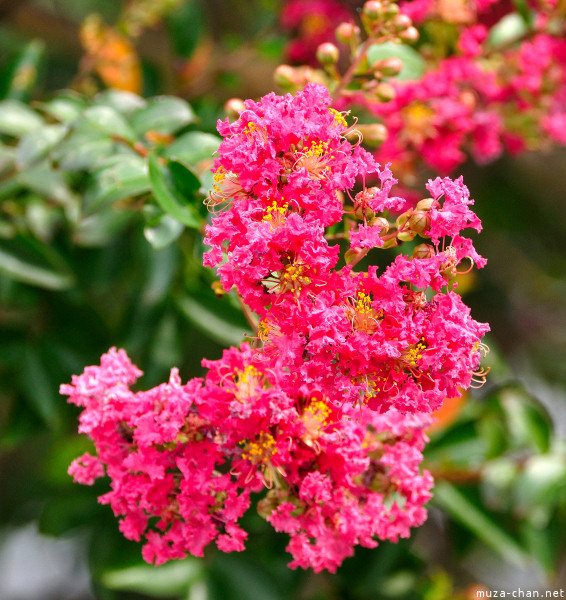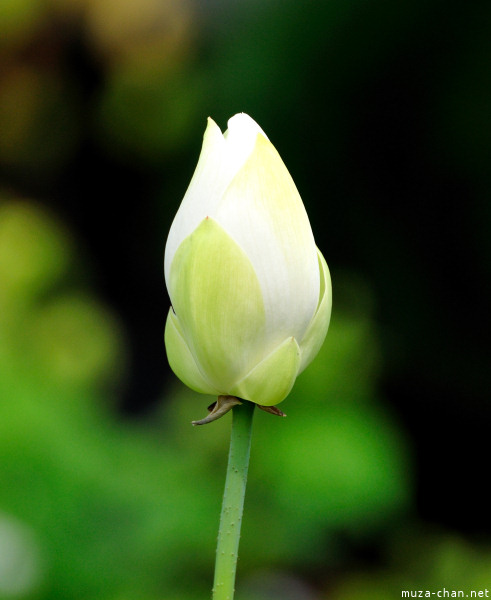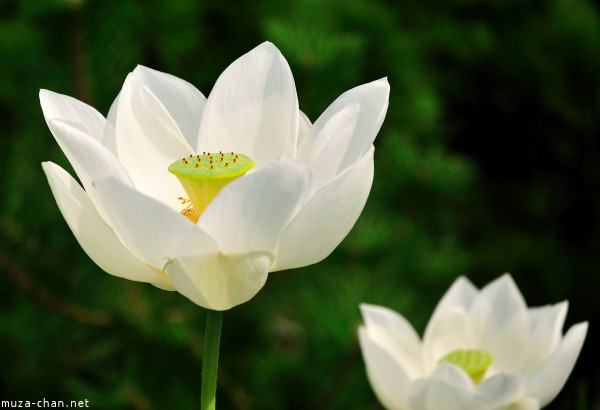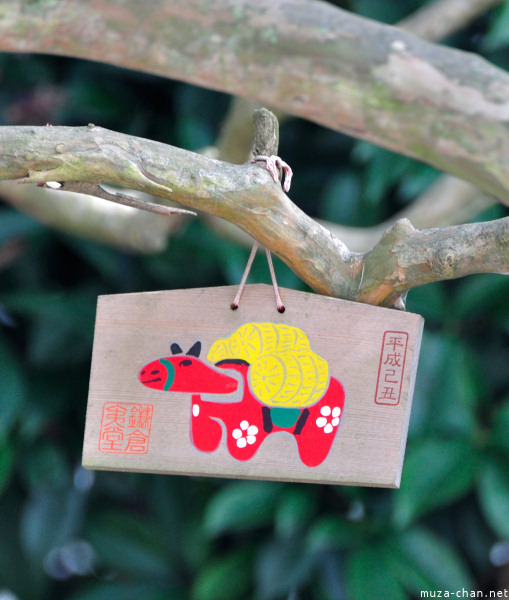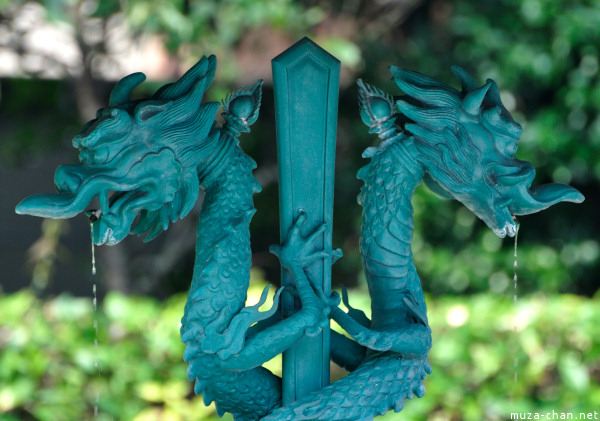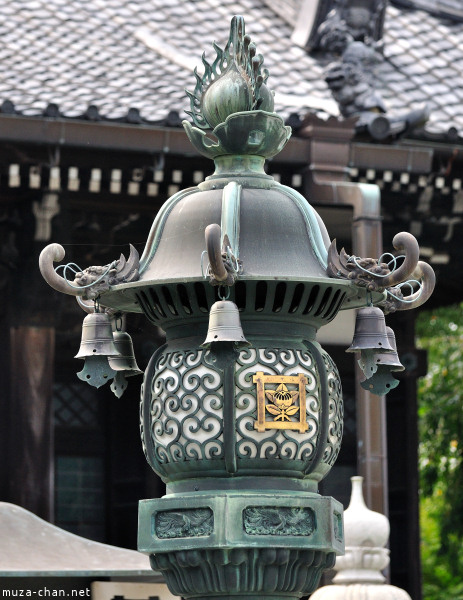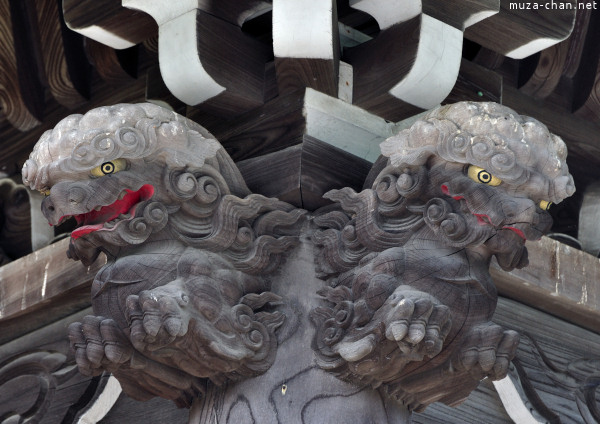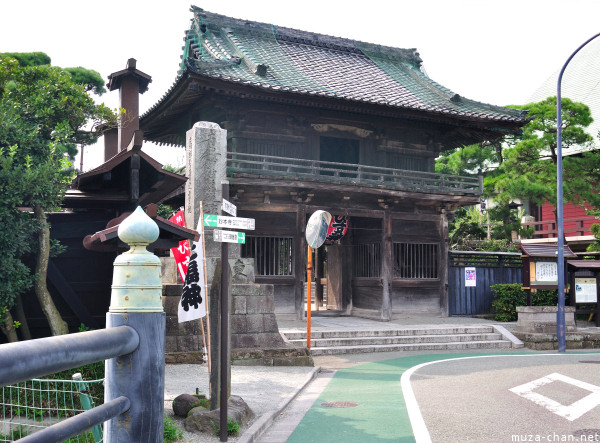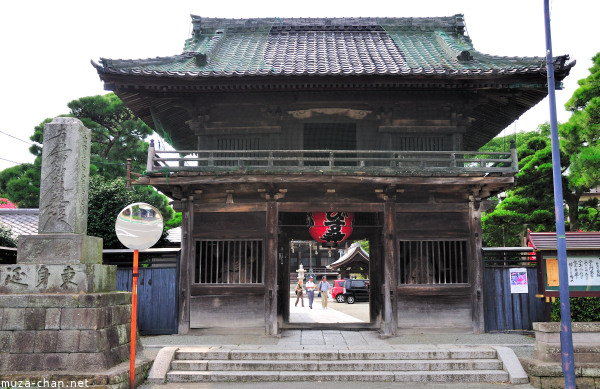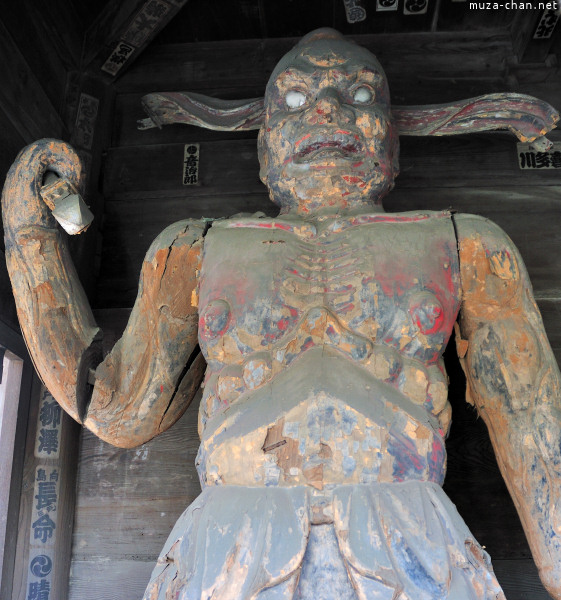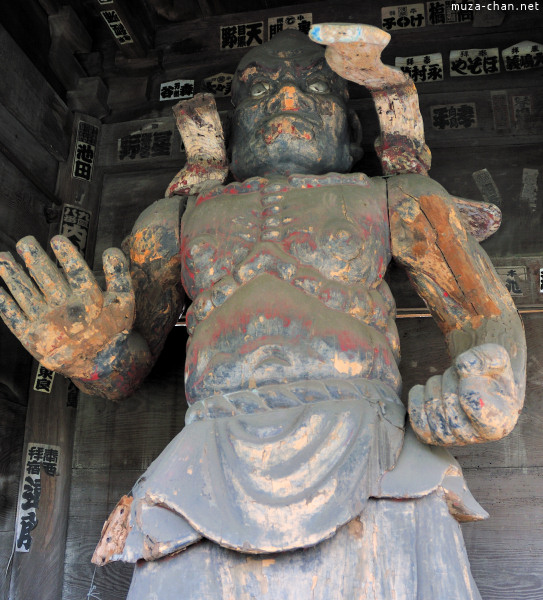At less than half a kilometer south-east of Kamakura Station, you can visit one of the most beautiful temples from Kamakura, the Hongaku-ji Temple.
The Temple belongs to the Nichiren Sect and was built in the year 1436 by the priest Nisshutsu (1381-1459).
Hongaku-ji remained known as the Higashi Minobu (Minobu East) after the priest Niccho (1421-1500) brought to the Temple parts of Nichiren’s ashes from the Mount Minobu.
There are two important events here at Hongaku-ji, the Ebisu Festival on January 10th and the Memorial Service for dolls on the first Sunday of October.
I visited the temple in August, when the Japanese Garden inside looks astonishing, with the trees in full bloom…
… and with white lotuses in the pond…
I liked very much this ema, hanging in a tree…
…. the entwined dragons from the temizuya…
… the lantern in front of the Temple…
… and the pair of koma-inu decorating the bell tower.
I’ve also noticed the Nio-mon Gate, with the two very old Nio Guardians (Benevolent Kings) statues.
The Nio from the right side is called Agyo, symbolizes the overt violence and the beginning of the universe, is holding a thunderbolt in his hand and is represented with its mouth opened.
The one from the left is called Ungyo, symbolizes the end of the universe and the latent, non-manifested strength, and is represented with the mouth closed.
La mai puţin de o jumătate de kilometru, la sud est de staţia Kamakura, se află unul dintre cele mai frumoase temple din zonă, templul Hongaku-ji.
Templul aparţine sectei Nichiren şi a fost construit în anul 1436 de către preotul Nisshutsu (1381-1459).
Hongaku-ji a rămas cunoscut cu numele de Higashi Minobu (Minobu de est) după ce preotul Niccho (1421-1500) a adus aici o parte din cenuşa lui Nichiren de la templul Kuonji de pe muntele Minobu.
La Hongaku-ji au loc două evenimente importate, pe 10 ianuarie Festivalul Ebisu şi în prima duminică a lunii octombrie Memorial Service for dolls.
Eu l-am vizitat la jumătatea lunii august, când grădina din curtea templului arată senzaţional, copacii sunt înfloriţi…
… şi înfloresc şi lotuşii albi din micul lac din centru…
Mi-a plăcut această ema, prinsă de creaga copacului…
…. cei doi dragoni încolăciţi de la temizuya…
… felinarul din faţa templului….
… şi perechea de koma-inu de pe clopotniţă.
De asemenea, am remarcat Poarta Nio-mon, cu cele două statui ale gardienilor Nio (Benevolent Kings), foarte vechi.
Cel din dreapta se numeste Agyo, simbolizează violenţa manifestată, în mână ţine un trăznet şi are gura deschisă, reprezentând începutul universului.
Cel din stânga se numeşte Ungyo, simbolizează forţa latentă, nemanifestată, este reprezentat cu mâinele goale şi are gura închisă, reprezentând sfârşitul universului.
